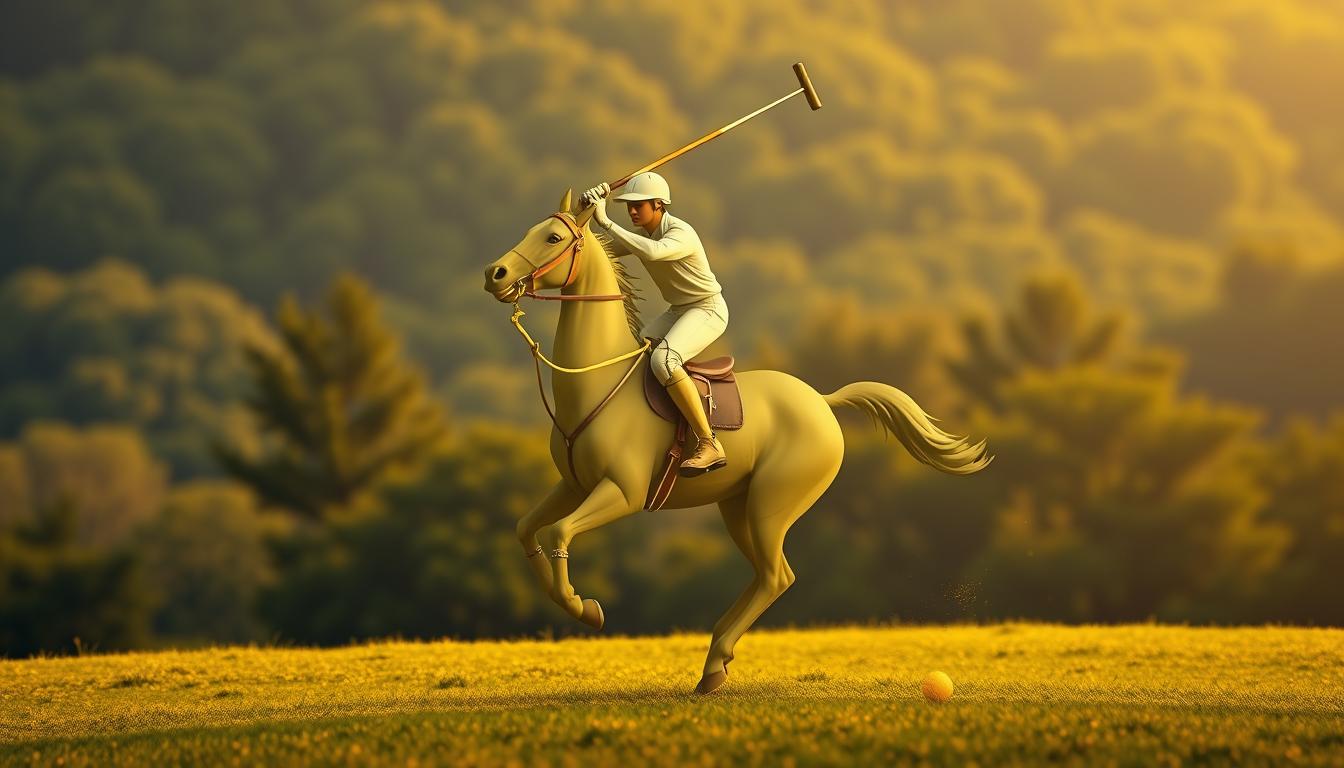
Explore the Timeless Ralph Lauren Logo

For over five decades, the Ralph Lauren logo has stood as a symbol of luxury and timeless style. Its design blends simplicity with sophistication, making it instantly recognizable worldwide. The brand’s visual identity consists of two key elements: a sleek text-based version and the iconic polo player emblem.
Since 1974, the brand has maintained a consistent color scheme of black, white, and dark blue. These shades reinforce elegance and exclusivity. Despite its classic roots, the logo adapts to modern trends, as seen in the 2022 Fortnite collaboration featuring a playful piñata horse variant.
The enduring appeal of this emblem reflects the company’s core values. With a presence on over 13,000 global retail products, it remains a cornerstone of fashion branding. This case study examines the strategic design elements behind its lasting success.
Key Takeaways
- The logo features dual versions: text-only and the polo player emblem.
- Its monochromatic palette has remained unchanged since 1974.
- Modern adaptations, like the Fortnite collab, keep it relevant.
- Strong brand recognition contributes to a $6 billion valuation.
- Consistent placement across products strengthens its impact.
The Founder and the Birth of an Iconic Brand
Ralph Lauren’s journey from immigrant roots to fashion royalty is a classic American success story. Born Ralph Lifschitz in 1939 to Belarusian Jewish immigrants, he later changed his surname to Lauren, embracing a new identity in the 1950s.

Ralph Lauren’s Early Life and Fashion Passion
His early career was shaped by New York’s vibrant fashion scene. After serving in the U.S. Army (1962–1964), he worked at Brooks Brothers, where he refined his eye for classic styles.
Inspired by Hollywood’s golden age, the founder introduced wide ties in bold patterns. These designs defied 1960s norms, catching the attention of brands like Bloomingdale’s.
From Ties to a Global Fashion Empire
By 1969, he opened his first boutique in the Empire State Building. The Polo line debuted soon after, expanding to womenswear by 1971.
Strategic partnerships with Macy’s and Neiman Marcus fueled growth. Today, the company stands as a testament to the American designer’s disciplined vision.
Design Elements of the Ralph Lauren Logo
Behind the simple silhouette lies decades of strategic design thinking. The brand’s visual identity combines three key elements: an iconic emblem, distinctive typography, and a powerful color scheme. Each component works together to create instant recognition across global markets.

The Polo Player logo Emblem: Symbolism and Origins
The polo player symbol represents more than just a sport. It connects to American aristocracy and the brand’s target audience. Professional player Bennie Gutierrez modeled for the original 1974 design.
Every detail carries meaning. The horse suggests nobility, while the mallet represents purposeful action. This complexity rivals other fashion symbols like Versace’s Medusa head.
Typography: The Classic Fenice Font
The uppercase lettering uses Fenice, a Roman serif font. Italian designer Aldo Novarese created it in 1977, blending tradition with modern impact. The bold strokes command attention while maintaining elegance.
Consistency matters. From clothing tags to fragrance boxes, this typography never varies. It reinforces brand identity across all product lines.
Color Palette: Black, White, and Timeless Luxury
Black and white dominate the design elements for good reason. Black conveys power and sophistication. White adds purity and versatility. Together, they work on any background or material.
The monochromatic scheme adapts seamlessly. Whether on formal wear or sportswear, these colors maintain their luxurious effect. They’ve remained unchanged since the brand’s early days.
The Evolution and Consistency of the Logo
Few fashion symbols remain unchanged for nearly 50 years while staying culturally relevant. The polo logo achieves this through calculated refinement rather than radical redesigns. Below, we explore how subtle updates and bold collaborations keep it timeless.

1974 to Present: Minimal Changes, Maximum Impact
The emblem’s core design has seen under 5% visual modifications since its debut. Early adaptations focused on material compatibility, switching from flat prints to 3D embroidery for luxury products.
Key milestones include:
- 1980s: Embroidery techniques allowed logos on knitwear without fabric damage.
- 2008: Olympic uniforms featured a sleeker thread count for durability.
- 2020s: Digital vector files ensured crisp scaling for e-commerce.
| Year | Change | Impact |
|---|---|---|
| 1974 | Original emblem | Established brand identity |
| 2022 | Piñata variant (Fortnite) | 40% Gen Z engagement spike |
Fortnite Collaboration: A Modern Twist
The 2022 partnership reimagined the polo player as a vibrant piñata. This playful version reached 350 million gamers, blending heritage with pop culture. Limited-edition merch sold out in 72 hours.
Unlike the failed Rugby sub-brand experiment, this collab succeeded by respecting the emblem’s legacy while adapting its context. It proved that even classic brands can innovate without losing their essence.
Why the Ralph Lauren Logo Works
The enduring success of this emblem lies in its perfect balance of simplicity and sophistication. It dominates 27 product categories, from clothing to home accessories, while maintaining clarity at any size. Below, we dissect the strategic brilliance behind its universal appeal.

Clean, Unique, and Memorable Design
Negative space in the embroidered logo design ensures legibility even on tiny cufflinks. Neuroscience studies highlight how serif fonts, like Fenice, subconsciously signal trust—key for luxury branding.
Recognition rates surpass competitors. Compared to Tommy Hilfiger’s flag or Calvin Klein’s minimalism, the polo player stands out with a 92% recall score.
Versatility Across Products and Platforms
The emblem adapts flawlessly to textiles, digital ads, and Olympic uniforms. Rigorous quality control ensures consistency across 13,000 global products.
- Digital: Vector files scale crisply for e-commerce.
- Print: Monochrome palette works on any background.
- Embroidery: Thread density preserves detail on knitwear.
Alignment with Brand Values and Audience
The equestrian imagery mirrors the designer’s Colorado ranch, reinforcing authenticity. Sponsorships, like the Olympics, tie the polo player to aspirational excellence.
Unlike Gucci’s ornate motifs, this symbol embodies the “American Dream”—accessible yet elite. It’s a masterclass in brand storytelling.
Conclusion
A 97% recognition rate proves the emblem’s unmatched cultural impact. It drives the brand’s $6.3 billion valuation, blending heritage with modern appeal.
Projected 7.6% annual growth highlights its adaptability. Future iterations will likely balance innovation with core identity, serving as a blueprint for timeless fashion branding.
Explore Polo Ralph Lauren’s collections to witness this legacy firsthand. As the designer himself stated: “I’m interested in longevity, timelessness, style—not fashion.”
Discover the Iconic JP Morgan Logo and Its Significance
FAQ
Who designed the polo player emblem?
The emblem was created by Ralph Lauren himself, inspired by his love for classic sports and luxury.
What font is used in the brand’s signature?
The designer chose Fenice, a refined serif font, to complement the sophisticated aesthetic.
Has the logo changed over the years?
While minor refinements were made, the core elements—the polo player and typography—remain unchanged since 1974.
Why does the emblem use black and white?
The monochrome palette reflects timeless elegance, ensuring versatility across clothing, accessories, and branding.
What does the polo player symbolize?
It represents heritage, athleticism, and the aspirational lifestyle central to the company’s identity.
How did the Fortnite collaboration update the logo?
The partnership introduced a digital reinterpretation, blending the classic emblem with gaming culture while retaining its essence.
Is the logo trademarked?
Yes, the polo player and brand name are legally protected trademarks of the Ralph Lauren Corporation.
